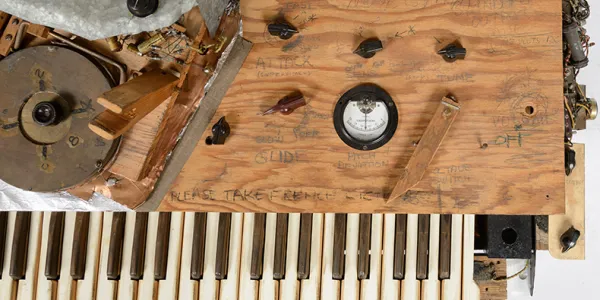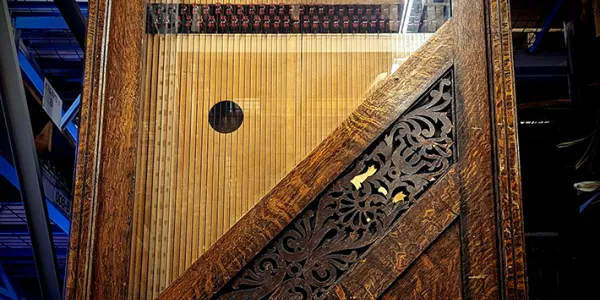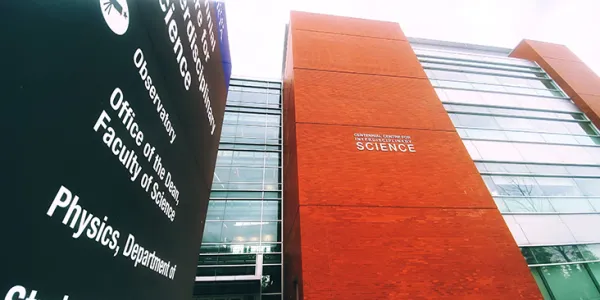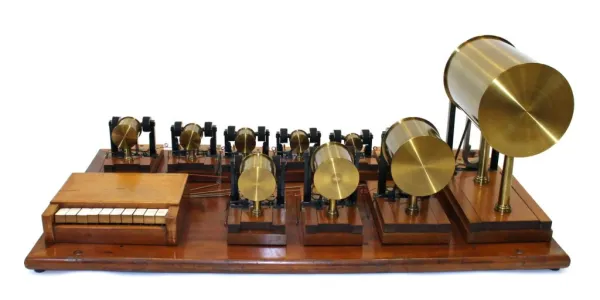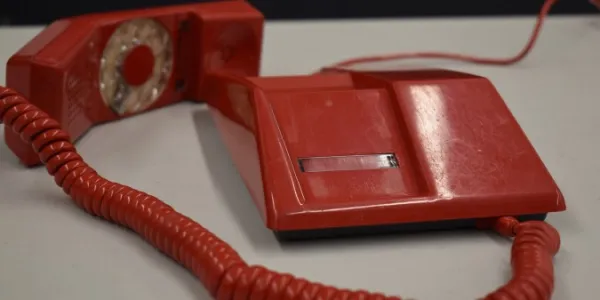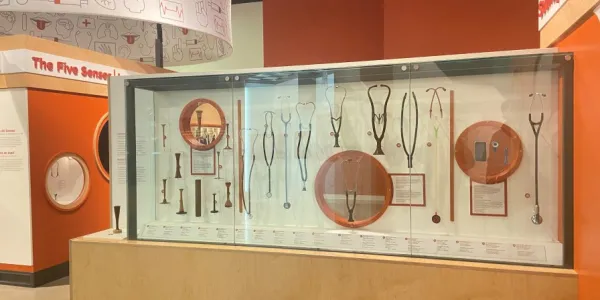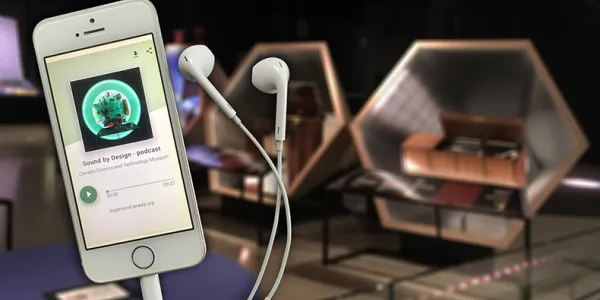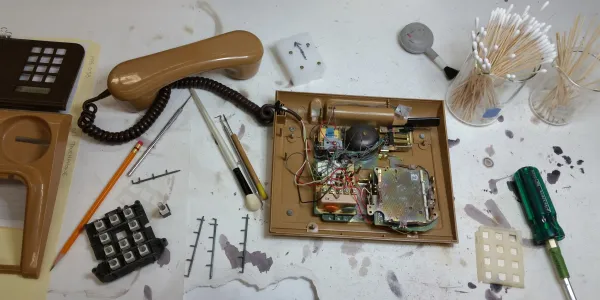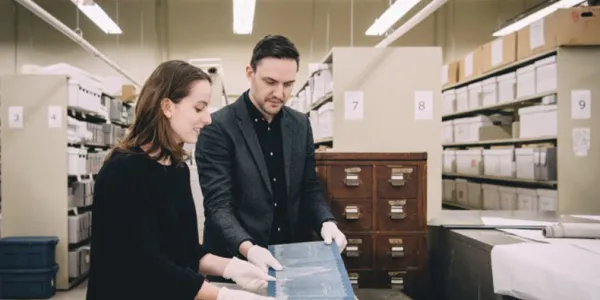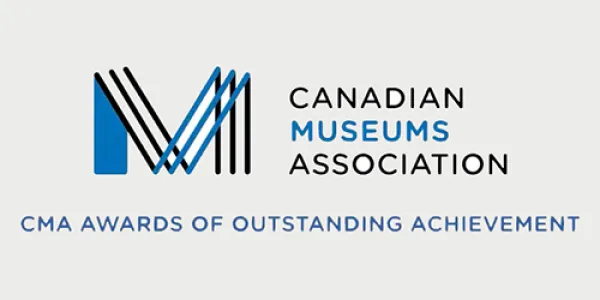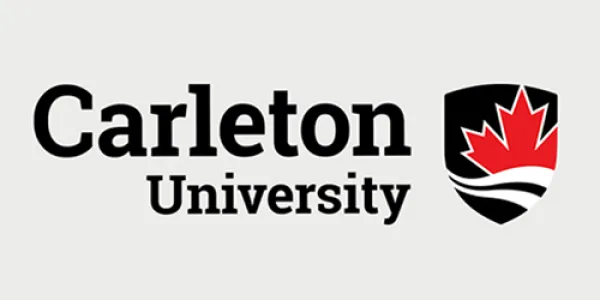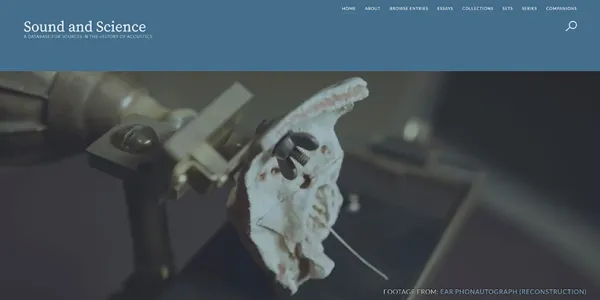
Project Description
What can museum artifacts teach us about the sounds of the past? What happens when we study objects with our ears as well as our eyes? How have sound technologies influenced us over time — and where will new sound-related innovations lead us in the future?
The Sound Artifacts project investigates our changing material world from the perspective of sound. The project unites a growing body of work at Ingenium, taking sound as a starting point for thinking about the design, use, and influence of technology in our lives.
Central to Sound Artifacts is a focus on experimentation and collaboration: exploring unconventional, sound-based research methods; experimenting with innovative digital tools; and working with students, external partners, and community members to generate new insights and perspectives.
The ongoing outcomes of the project — including museum exhibitions, blog posts, research publications, video profiles, and more — can be found below.
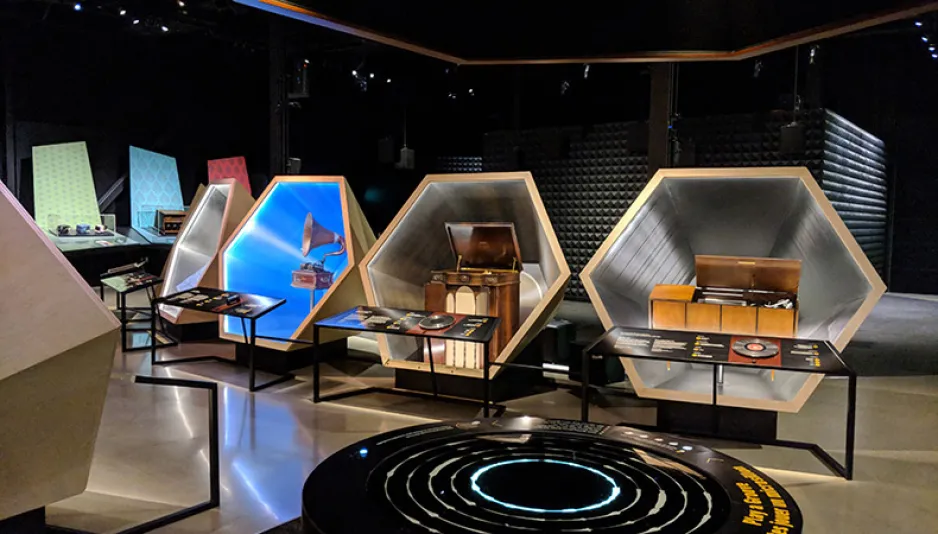
Exhibition: Sound by Design
Sound by Design showcases important innovations in sound technology over the past 150 years.
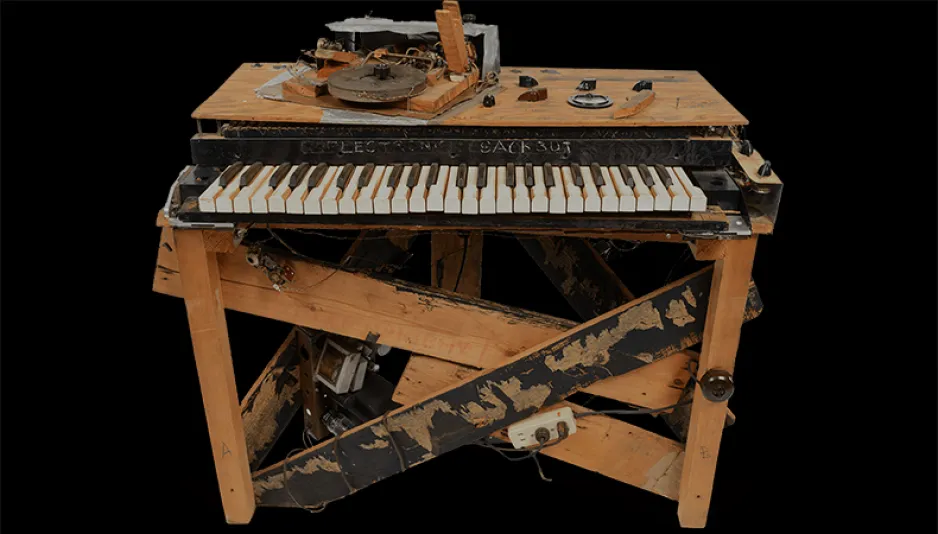
Research Spotlight: The Electronic Sackbut Reconstruction Project
The Electronic Sackbut is a keystone artifact in Ingenium’s electronic musical instrument collection. Built by Canadian Hugh Le Caine between 1945 and 1948, it is recognized as one of the world’s first synthesizers—and is likely the oldest surviving example of its kind. This project aims to create a full-scale, fully-functional reconstruction of this artifact. The goal is to give researchers and musicians the opportunity to play this historic instrument for the first time in over 70 years.
publications
Blogs
Video profiles
Transcript
| Audio | Visual |
|---|---|
| Welcome to the Canada Science and Technology Museum. Today we’ll be talking about the Electronic Sackbut—one of the first known synthesizers and a trailblazer in the world of electronic music. | The video starts with a drone shot of the Canada Science and Technology Museum. Shot quickly changes to the Electronic Sackbut on the museum floor. The shot changes again to an image of a museum curator wearing a black button-up shirt, with dark hair and a mustache. The text on the screen says- Tom Everrett, Curator, Communication Technologies. |
| Hugh Le Caine was the Canadian innovator behind this instrument. He began his career as a physicist developing radar systems at the National Research Council of Canada. | The scene pans up to a black and white image of Hugh Le Caine in a dark suit with dark slicked-back hair in a workshop. It shows him working on what resembles a keyboard attached to a piece of wood with multiple dials and switches. |
| Although a physicist by trade, his true passion was for electronic musical instrument design. From his home workshop, between 1945 and 1948, Le Caine developed a groundbreaking instrument that he called The Electronic Sackbut. He named it after the “saqueboute” or sackbut, an archaic 15th century precursor to the modern trombone. | The scene changes back to the dark-haired curator from before as he continues to talk. An image then appears on the screen of the slicked-back dark-haired man continuing to work in the workshop on the same machine, but from behind giving a better look at the keys and the machine's name. The shot slowly gets wider allowing for the image to be zoomed out. |
| Le Caine had no way of knowing it, but what he was actually building was one of the world’s first analogue synthesizers – two decades before the first commercial “synthesizer” was sold. | The shot again switches back to the dark-haired curator. The shot changes to panning up on the Electronic Sackbut in a glass display case on a wooden pedestal. |
| Looking at the artifact, you can see how experimental it really was. But don’t let its rough appearance deceive you: the Electronic Sackbut was a powerful electronic instrument, with many of the same features – and sounds – we associate with modern synthesizers today. | The shot changes to a close-up panorama of the details on the wooden part of the instrument. This includes switches, dials, a gauge, wires, and what looks like a Morse code device. The image then moves down to show the keyboard keys. The Shot then changes to another view of the instrument but this time head-on. |
| In 1954, the National Research Council of Canada saw such potential in Le Caine’s design that they made him head of their new electronic music lab, the first in Canada. His job: to work full-time developing new and unconventional electronic instruments for other researchers and artists to explore. Over the course of his career, Le Caine designed over 20 unique instruments, and is considered one of the most important pioneers of electronic music in Canada. | The shot switches to a black-and-white image of a metal plate with swirls, sharp quick-changing lines, and zig-zag lines. The image also shows what looks like cursive letters. The image then changes to a black and white picture of three men. One is in a light grey suit with the front of his hair spiked up as he is holding a roll of white paper and gesturing at a panel with many dials. On the man’s left, the two other men stand in black suits and slicked back hair. They are both looking at what the first man is gesturing to. The image changes to an older-looking man in a black turtleneck sweater as he works on a more modern electronic instrument. |
| You can come and see the Electronic Sackbut—and some of Le Caine’s other amazing instruments—on display in the Sound by Design exhibition at the Canada Science and Technology Museum. | The shot changes to the dark-haired curator who is speaking. The final shot is of the Ingenium logo with the text Canada’s Museums of Science and Innovation. It then switches to an image with the URL-IngeniumCanada.org, and then finally the government of Canada’s logo. |
Transcript
| Audio | Visual |
|---|---|
|
Curator Tom Everrett — a white male in his late 30s — is standing beside the Sound Analyser. He is wearing a pair of blue artifact-handling gloves. |
|
|
Text on screen: Tom Everrett, Curator, Communications. |
|
|
Everrett: This here is a Koenig Sound Analyser, made by Rudolph Koenig in the 1880s in Paris. |
|
|
Everrett: What’s so amazing about this machine is that it allowed scientists, for the first time, to do something they couldn’t do before, which was to make something invisible — sound waves — visible, so that you could actually study sound, as it happened, in real time, using your eyes as well as your ears. |
Camera moves to a close-up view of the artifact, and pans slowly upwards from bottom to top. |
|
Everrett: As you rotate this mirror, the flames start to appear as a single line or a single streak across the mirror. |
The camera returns to a shot of Everrett standing next to the Sound Analyser. Everrett turns a handle to rotate the artifact’s four-sided mirror. |
|
Everrett: And depending on which resonator is resonating at that time — which harmonics are in the sound — those particular flames will start to jump and dance on the mirror. |
Everrett stops spinning mirror and points to where different flames will appear on the mirror when flames are lit. |
|
Everrett: And that tells you which one of those resonators, which one of those harmonics, is actually being activated by that particular sound. |
|
|
Everrett: So artists would then draw those sounds out, and draw what was appearing on the mirror, and that was their record. So they could start to study the different harmonics that appear in different sounds. |
|
|
Everrett: Ready? |
A close-up view of the artifact, where flames on the mirror are now lit. The background room is darkened. |
|
Everrett’s colleague, curator David Pantalony, is standing off-screen left with a handheld organ pipe. |
|
|
Pantalony: Go, yeah. |
Everrett rotates the four-sided mirror at an increased speed; his face is illuminated by the bright flames. The organ pipe, played by Pantalony, appears on the left side of the screen. |
|
Text on screen: David Pantalony, Curator, Physical Sciences and Medicine. |
|
|
[The sound of organ pipe being blown to produce a note (G).] |
|
|
Pantalony: Oh, we got it, see? The G. |
Light streaks take on the shape of sound waves across the mirror. |
|
[The sound of the organ pipe blown harder, increasing in pitch.] |
Light streaks continue to react to the sounds produced by the organ pipe. |
|
Pantalony: You see organ pipes are really rich in harmonics. That’s why the whole thing is lighting up. |
|
|
[The sound of the camera operator, off-screen, singing alongside the organ pipe (same note of G), which slowly increases in pitch.] |
The camera zooms in closer on the mirror. |
|
Pantalony: This is the best one ever I’ve tried. |
|
|
[The sound of the camera operator singing in a slightly higher key (B flat), while the organ pipe is being blown (in G).] |
A slow motion view; the shapes of sound waves appear more clearly in the mirror. |
|
[The sound of the organ pipe being blown in G, then increasing in pitch.] |
|
|
[The sound slowly fades away.] |
The screen slowly fades to black. |
|
The Ingenium logo appears, animated against a white background. |
|
|
The Ingenium logo disappears and is replaced with Ingenium’s web URL, IngeniumCanada.org. |
|
|
The Ingenium URL disappears and is replaced by a Canada logo. |
Transcript
| Audio | Visual |
|---|---|
|
[Quiet, ambient music begins playing and continues throughout the video.] |
|
|
Everrett: Hi, I’m Tom Everrett, Curator of Communications at Ingenium, and I’m here with our recent reconstruction of Alexander Graham Bell and Clarence J. Blake’s 1874 ear phonautograph. |
Curator Tom Everrett — a white male in his late 30s — is standing in the Canada Science and Technology Museum’s Sound by Design exhibition. The ear phonautograph is sitting on a tall, circular table to his left. |
|
Everrett: The ear phonautograph works by channeling sound wave vibrations, made by speaking into the mouthpiece, into the ear canal of an excised human ear. |
The camera pans across the ear phonautograph from different angles. |
|
Everrett: Vibrations from the ear drum are then passed onto a stylus which then etches the shape of those vibrations onto a moving plate of smoked glass. |
|
|
Everrett: Bell’s original goal for the instrument was to use it as part of his controversial and ultimately failed deaf speech training program called “visible speech.” |
The camera returns to a shot of Everrett standing next to the ear phonautograph. |
|
Everrett: However, it’s best known today as the instrument that gave him the technical insight he needed to go on and invent the telephone in 1876. |
|
|
Everrett: Sadly, the original ear phonautograph no longer exists, which is why we decided to build this reconstruction — using a 3D printed ear — to give Canadians the opportunity to see it in person for the first time. |
The camera pans across the ear phonautograph, showing different close-up angles of the object. |
|
Everrett: As well as to give ourselves the opportunity to see what might be learned by physically recreating a lost object that, for over a hundred years, has existed only in historic images and writing. |
|
|
Everrett: If you want to see the ear phonautograph it’s on permanent display in the Sound by Design exhibition at the Canada Science and Technology Museum in Ottawa. |
Camera returns to shot of Everrett standing next to ear phonautograph. |
|
The Ingenium logo appears, animated against a white background. |
|
|
[Ambient music fades into silence.] |
The Ingenium logo fades away, and is replaced by a Canada logo. |
|
The Canada logo disappears and is replaced with Ingenium’s web URL, IngeniumCanada.org. |
Awards
Partnerships
Project lead
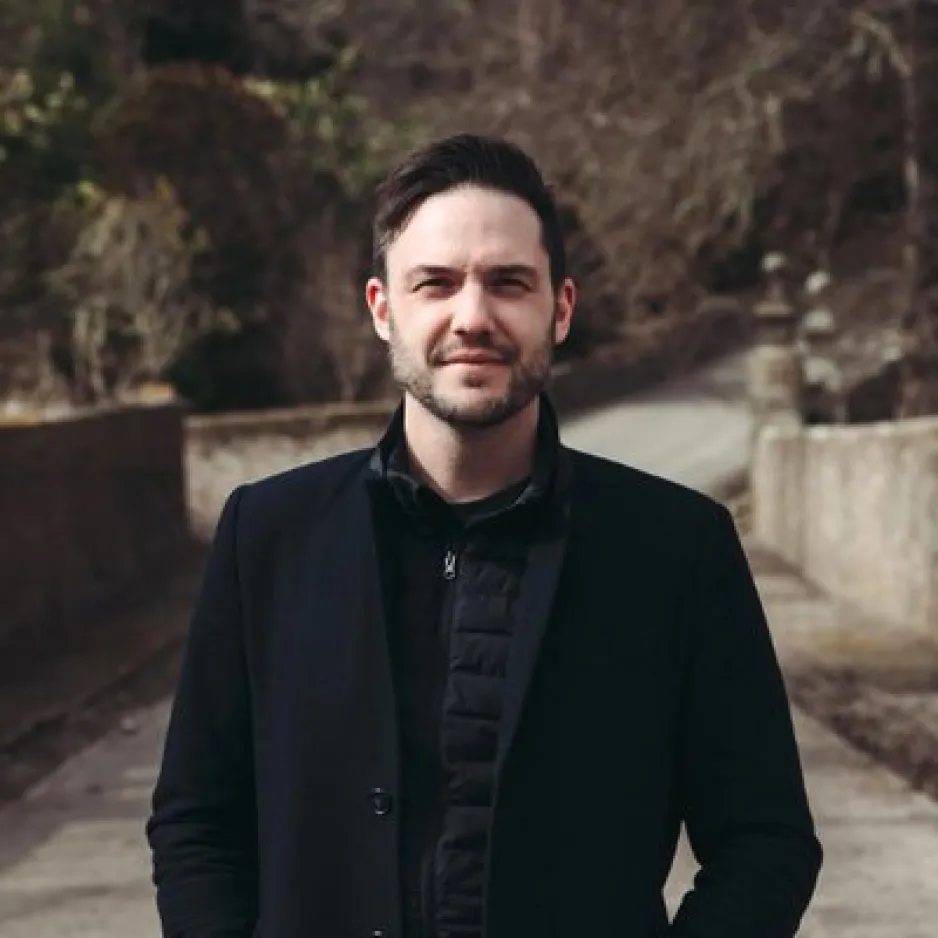
Dr. Tom Everrett
Curator, Communication Technologies
teverrett@ingeniumcanada.org
Twitter/Instagram: @CommTechCurator



